DESN 120B — FUNDAMENTALS OF DESIGN II | SPR 2020 | T/TH 4:00–6:45PM | DSN121
REFERENCE IMAGES
These are interesting photos because they leave a lot to the imagination while being extremely tactile.
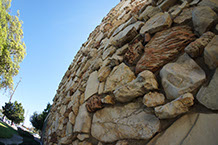
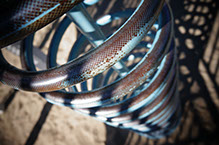
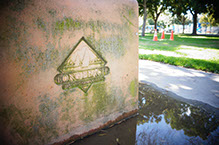
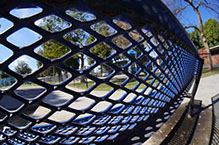

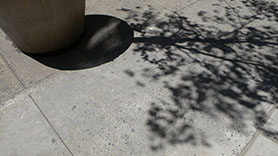
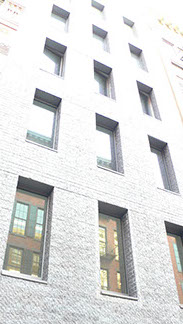
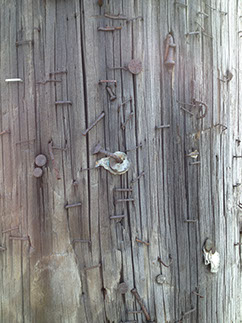
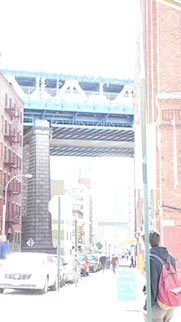
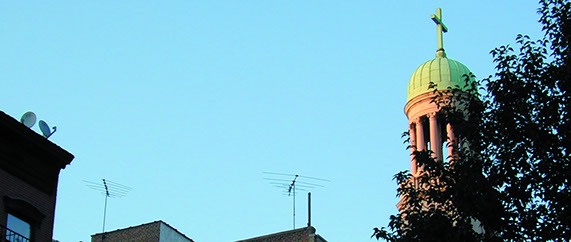
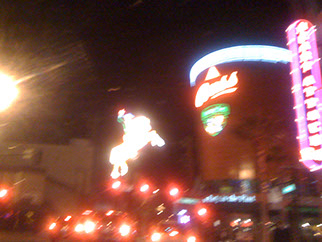
Making us work to decode is interesting.
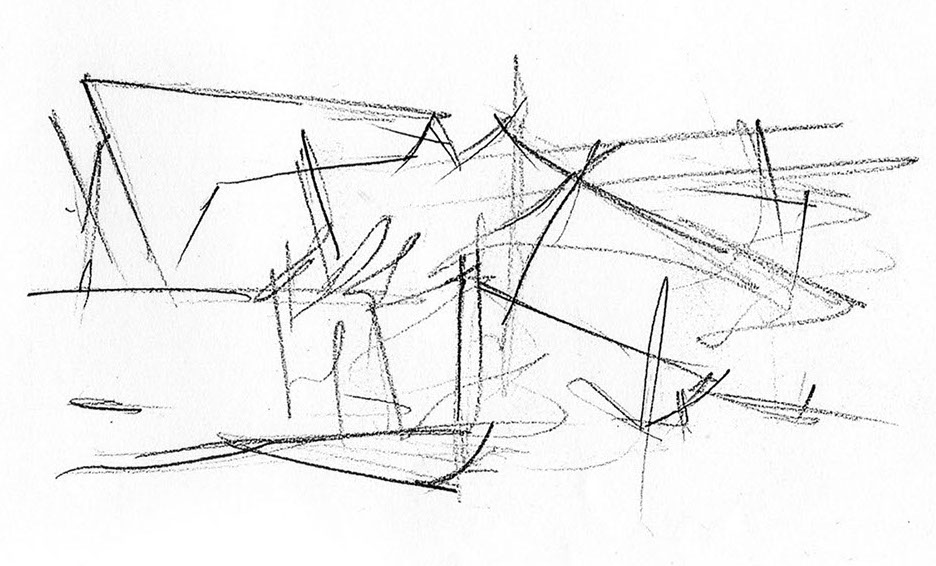
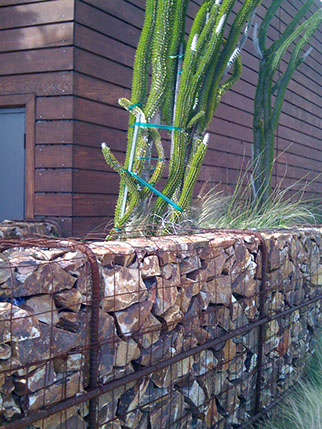
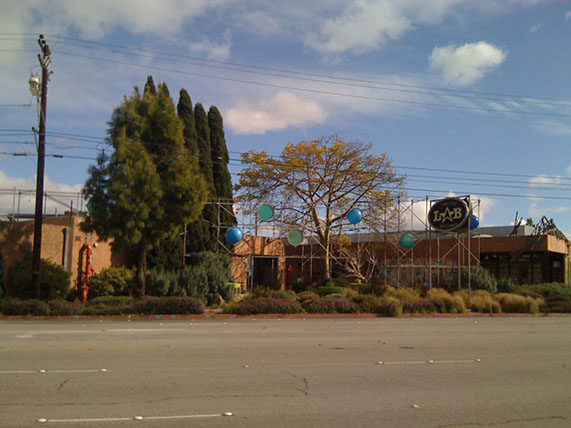
This tells us exactly what it is. It's uninteresting.
Consider sketching while moving to capture a pure expression of time and movement.
Don't draw the house, express the feeling of the house through your line, markings on the paper.
This tells us what it feels like. That's seductive.
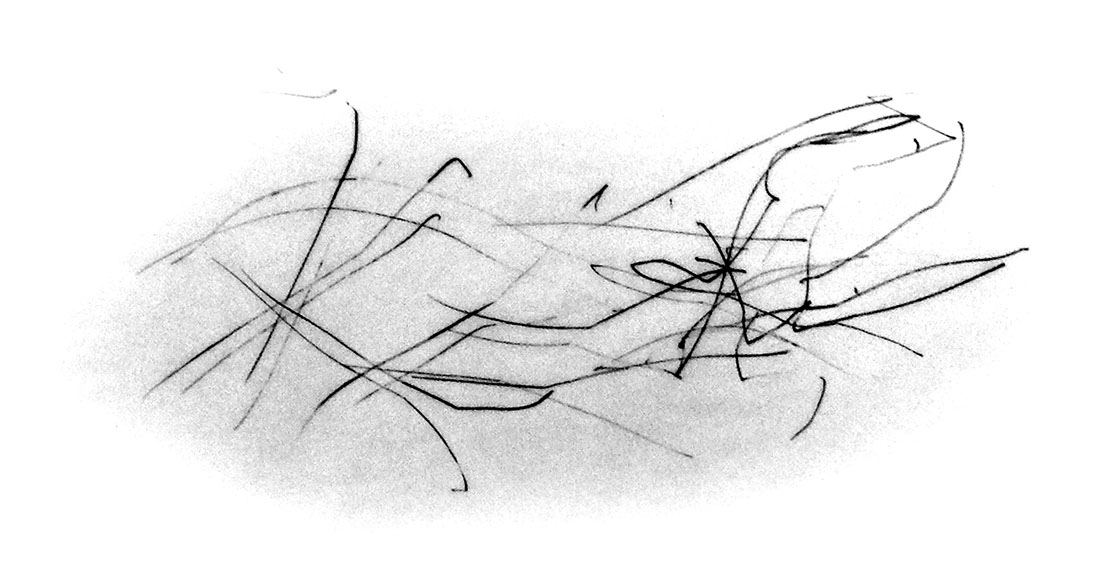
REFERENCE IMAGES
Coop Himmelblau
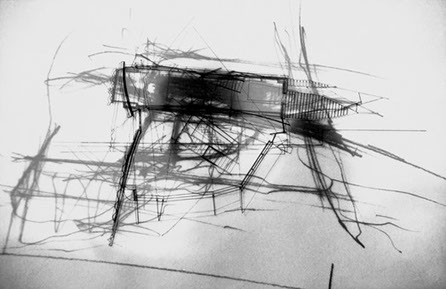
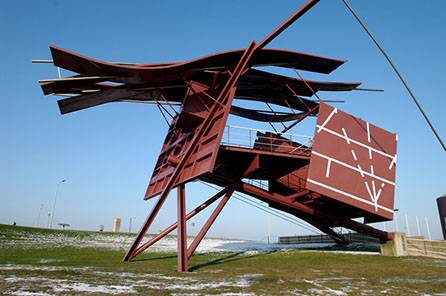
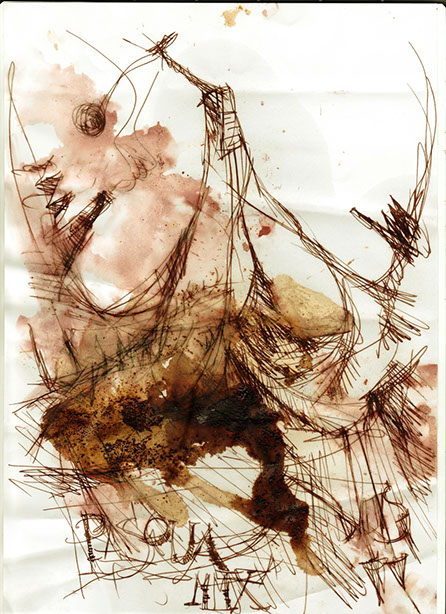
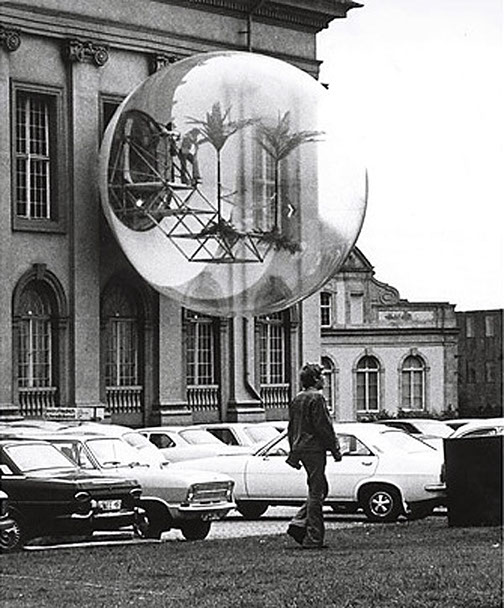
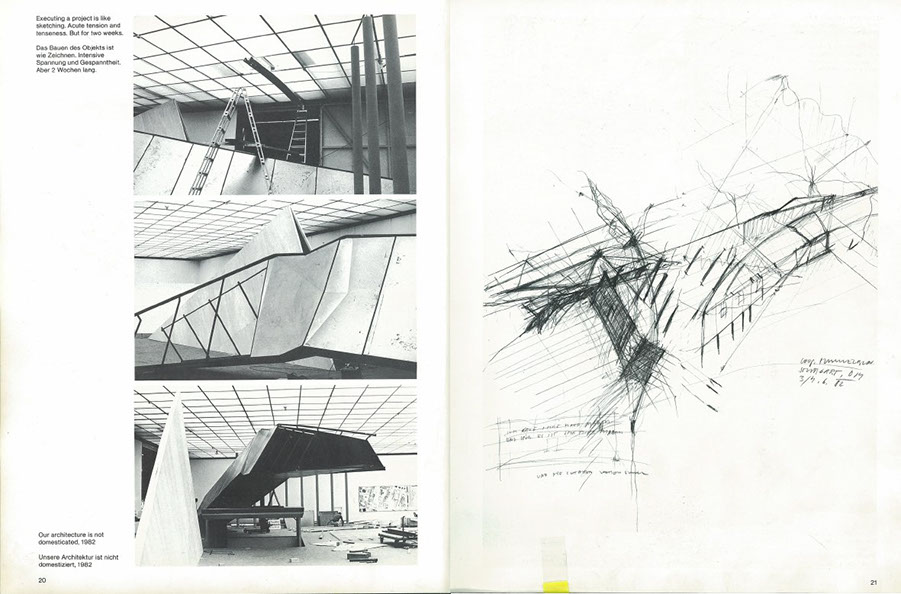
FINAL ASSEMBLAGE
Potentially, your end artifact may look something like this. Finished size is 24" square.
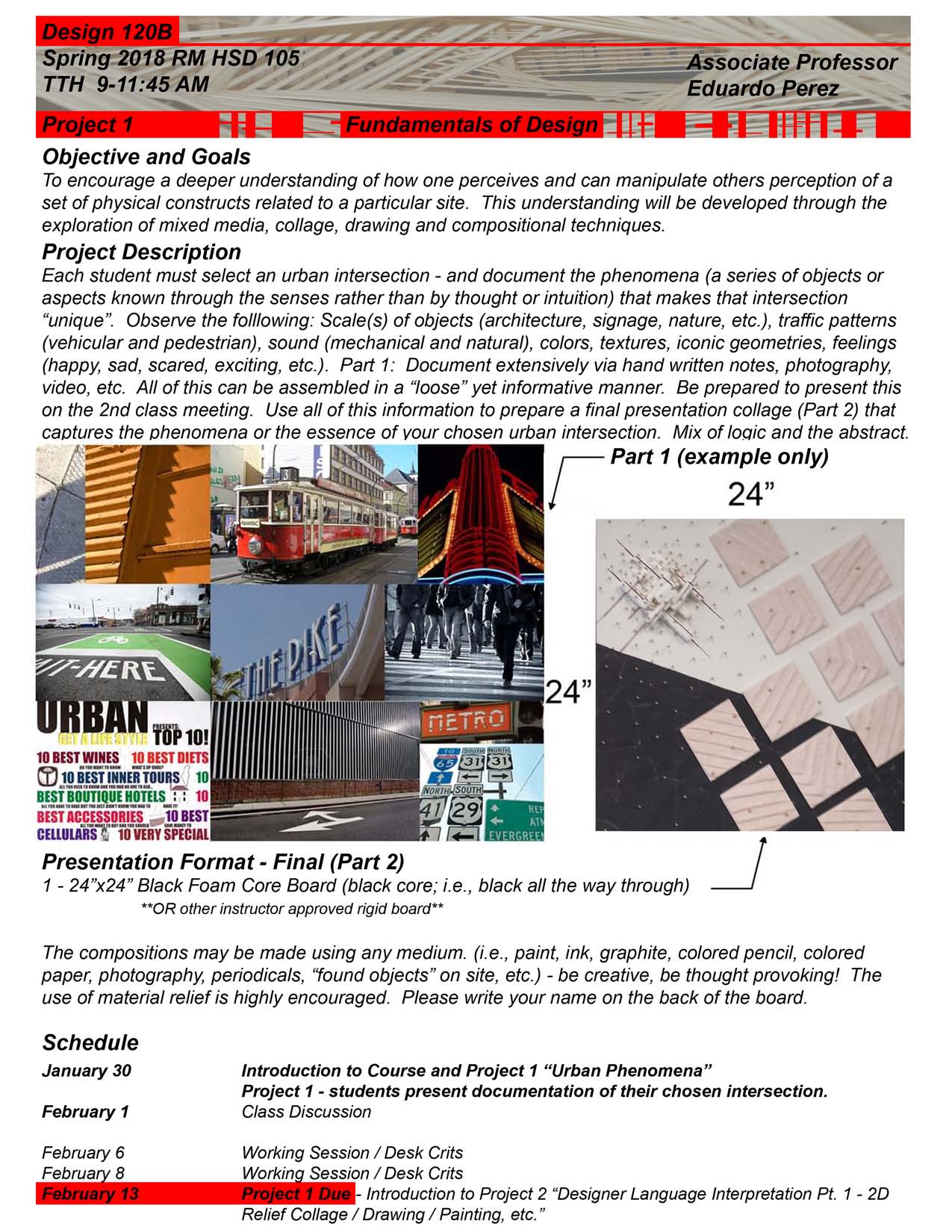
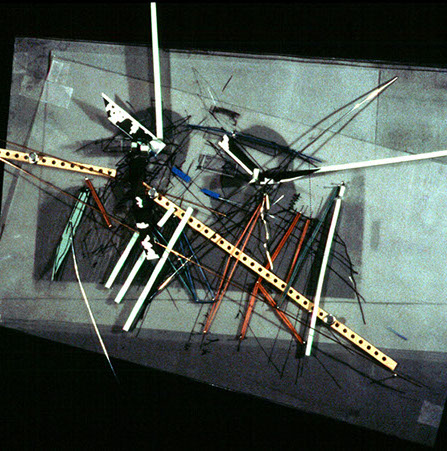
STUDENT LEARNING OBJECTIVES (SLOs)
Students will:
A. Gain a deeper understanding of how one perceives,
B. Gain a deeper understanding of how design manipulates perception,
C. To gain understanding of a set of physical constructs related to a
particular site,
D. To develop hand-making skills and techniques commonly used in
Industrial Design, Interior Design, and related Design Practices,
E. To develop an understanding of culturally defined standards of quality.
GRADING AND EVALUATION RUBRIC
Student's learning will be developed through the exploration of mixed media, collage, drawing and compositional techniques.
Assessment is determined based on one-on-one feedback, and through student verbal presentation of their concepts and work-product.
The following Rubric will apply in assessment of the student's work product, presentation, and/or process:
^
* Estimate only. See instructor and calendar for specific due dates. Summer Session schedule is more compressed with one week equal to approximately two and half semester weeks.
CSULB | COTA | DEPARTMENT OF DESIGN | BIO

Questions, feedback, suggestions?
Email me with your recommendations.
©2020 Michael LaForte / Studio LaForte, All Rights Reserved. This site and all work shown here is purely for educational purposes only. Where ever possible student work has been used or original works by Michael LaForte.
Works by professionals found online or in publication are used as instructional aids in student understanding and growth and is credited everywhere possible.